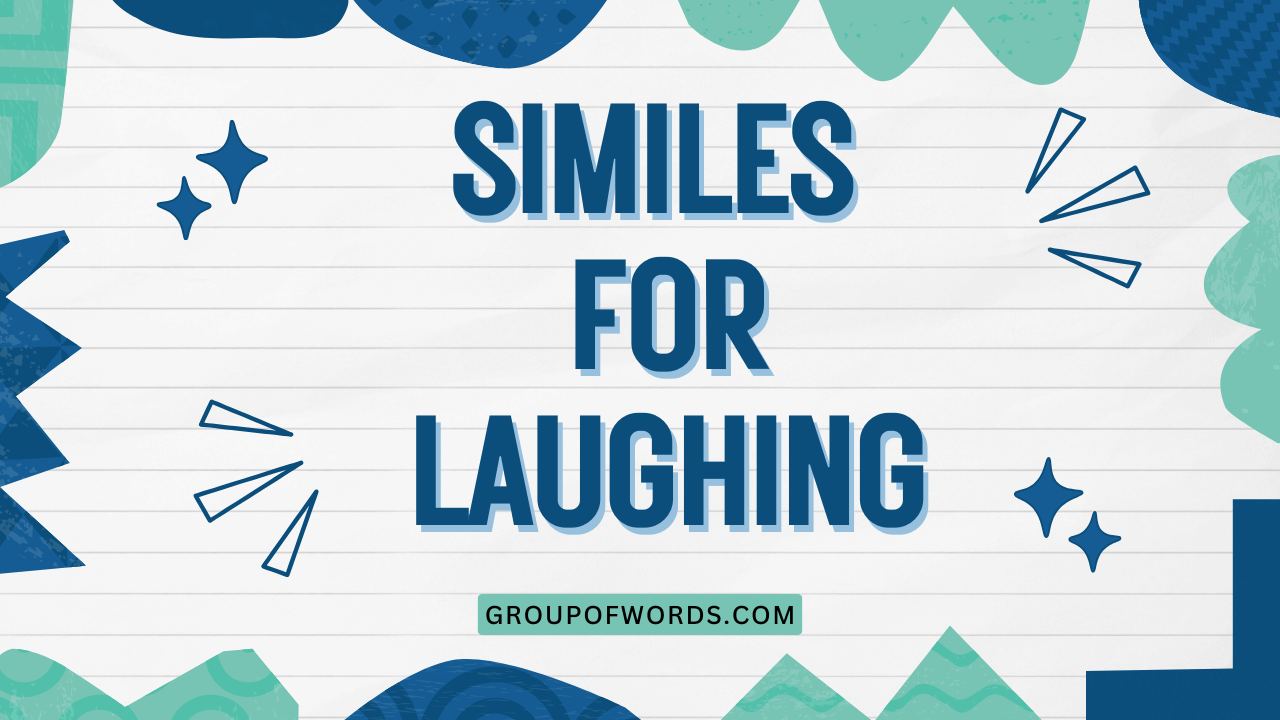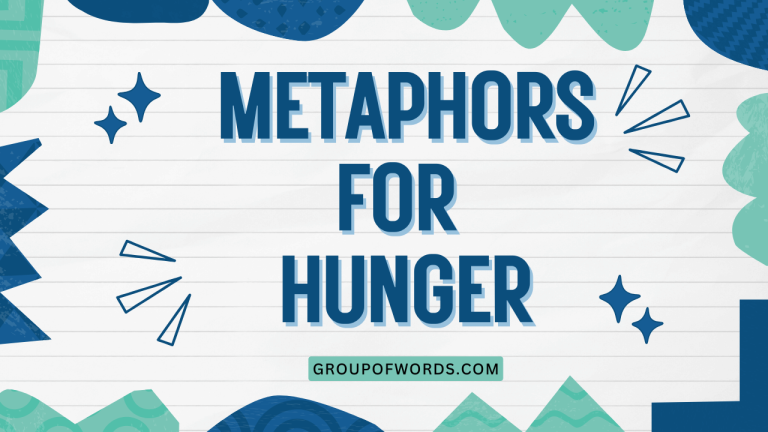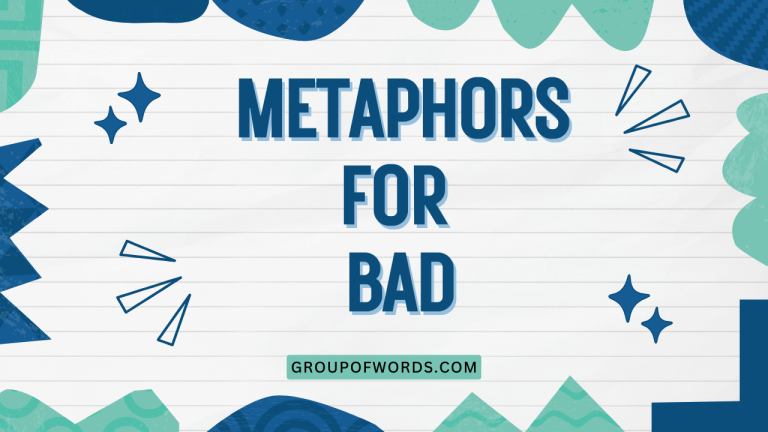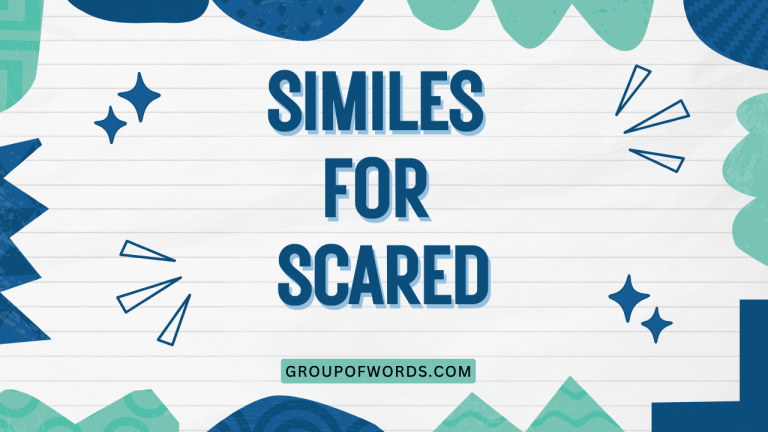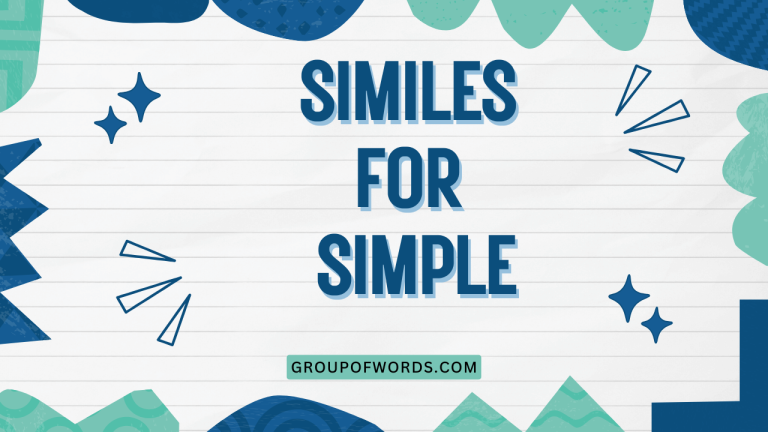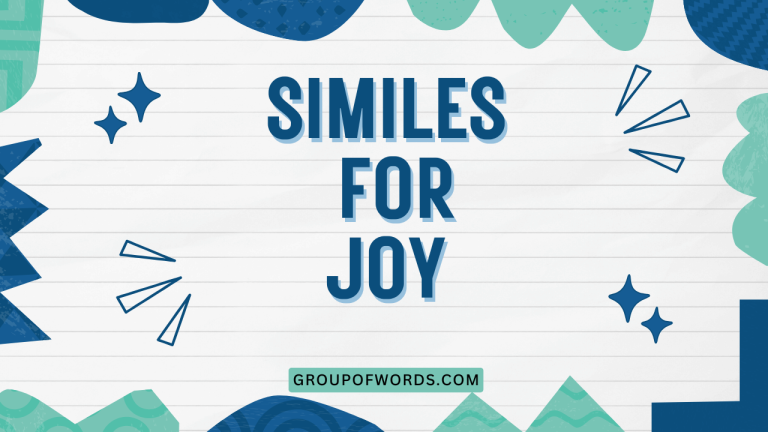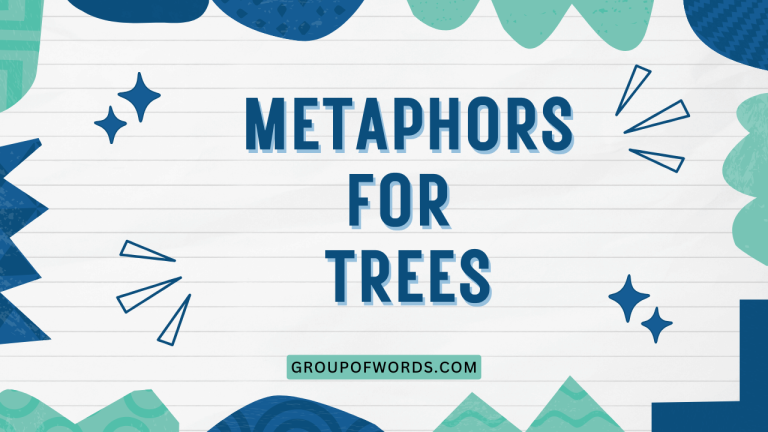Laughing Similes: Adding Color to Your Writing
Understanding how to use similes effectively can significantly enhance your writing and communication skills. Similes, a type of figurative language, allow you to draw comparisons between two unlike things, adding vividness and depth to your descriptions.
This article focuses specifically on similes used to describe laughter, exploring various ways to express this universal human emotion with creativity and precision. Whether you’re a student aiming to improve your essays, a writer crafting compelling narratives, or simply someone who enjoys the nuances of language, this guide will provide you with a comprehensive understanding of laughing similes and how to use them effectively.
Table of Contents
- Definition of Simile
- Structural Breakdown of Laughing Similes
- Types of Laughing Similes
- Examples of Laughing Similes
- Usage Rules for Laughing Similes
- Common Mistakes with Laughing Similes
- Practice Exercises
- Advanced Topics in Similes
- Frequently Asked Questions
- Conclusion
Definition of Simile
A simile is a figure of speech that directly compares two different things using the words “like” or “as.” The purpose of a simile is to create a vivid image in the reader’s mind by highlighting the similarities between the two subjects being compared. In the context of describing laughter, similes can help convey the sound, appearance, and emotional impact of someone laughing. Similes are essential tools for writers seeking to add color, depth, and originality to their work.
Similes function by establishing a relationship between two distinct entities, emphasizing a shared quality. This shared quality is what makes the comparison meaningful and impactful.
For instance, saying someone laughs “like a hyena” implies that their laughter is loud, perhaps a little harsh, and possibly even unsettling, drawing on the common perception of a hyena’s vocalizations. The effectiveness of a simile lies in its ability to evoke a specific image or feeling, making the description more engaging and memorable.
Understanding the nuances of simile construction allows writers to more accurately and creatively communicate their intended meaning.
Structural Breakdown of Laughing Similes
A typical simile follows a simple structure: Subject + Verb + Like/As + Object of Comparison. In the context of laughing similes, the subject is the person or thing laughing, the verb describes the act of laughing, and the object of comparison is something that shares a characteristic with the laughter. Understanding this structure allows for the creation of a wide range of similes, each conveying a unique aspect of laughter.
Let’s break down the components:
- Subject: The person or entity that is laughing (e.g., “She,” “The child,” “His voice”).
- Verb: A verb indicating the action of laughing (e.g., “laughed,” “giggled,” “chortled”).
- Like/As: The connecting word that establishes the comparison.
- Object of Comparison: The item, animal, sound, or concept to which the laughter is being compared (e.g., “a bubbling brook,” “a flock of geese,” “wind chimes”).
For example, in the simile “He laughed like a drain,” “He” is the subject, “laughed” is the verb, “like” is the connecting word, and “a drain” is the object of comparison. This structure provides a framework for crafting effective and descriptive similes.
Types of Laughing Similes
Laughing similes can be categorized based on the specific qualities of laughter they emphasize. These categories include similes that focus on the sound of laughter, the appearance of someone laughing, the emotional impact of laughter, and even the absurdity or unusual nature of laughter.
Similes Describing the Sound of Laughter
These similes focus on what the laughter *sounds* like. They often use auditory imagery to evoke the specific quality of the laughter, whether it’s a high-pitched giggle or a deep belly laugh.
Similes Describing the Appearance of Laughter
These similes describe what the person laughing *looks* like. They might focus on facial expressions, body movements, or other visual cues associated with laughter.
Similes Describing the Emotional Impact of Laughter
These similes focus on the *feeling* that the laughter evokes, either in the person laughing or in those who hear it. They can convey joy, relief, amusement, or even discomfort.
Similes Describing the Absurdity of Laughter
These similes highlight the unusual or unexpected nature of the laughter. They often use comparisons that are humorous or even bizarre.
Examples of Laughing Similes
Below are several tables filled with examples of laughing similes, categorized by the aspect of laughter they describe. Each table contains examples that illustrate different ways to use similes to depict laughter vividly and creatively.
Table 1: Similes Describing the Sound of Laughter
This table showcases similes that emphasize the auditory qualities of laughter. Notice how each comparison evokes a distinct sound, ranging from gentle and musical to loud and boisterous.
| Simile | Explanation |
|---|---|
| Her laughter was like wind chimes in a gentle breeze. | Suggests a light, delicate, and musical sound. |
| His chuckle was as warm as a crackling fireplace. | Implies a comforting and cozy sound. |
| Their giggles echoed like playful birdsong. | Conveys a cheerful and lighthearted sound. |
| Her laughter bubbled up like a spring. | Suggests a fresh, lively, and effervescent sound. |
| His guffaw was like a foghorn in the distance. | Implies a loud, booming, and far-reaching sound. |
| Her laughter tinkled like ice cubes in a glass. | Suggests a light, crisp, and refreshing sound. |
| His laugh was as grating as nails on a chalkboard. | Implies an unpleasant and irritating sound. |
| Her laughter rolled like thunder across the room. | Conveys a powerful and resonant sound. |
| His snickers were like the rustling of dry leaves. | Suggests a quiet, secretive, and slightly sinister sound. |
| Her laughter was as smooth as a jazz saxophone. | Implies a sophisticated, melodious, and pleasing sound. |
| His laughter echoed like a canyon’s roar. | Suggests a loud, booming, and expansive sound. |
| Her giggle was like a bubbling brook. | Conveys a cheerful, light, and carefree sound. |
| His laughter was as infectious as a catchy tune. | Implies that the laughter is easily spread and enjoyed. |
| Her laughter was like the chime of distant bells. | Suggests a pleasant, clear, and melodious sound. |
| His laughter was as deep as a well. | Implies a profound, resonant, and heartfelt sound. |
| Her laughter crackled like static electricity. | Suggests an energetic, unpredictable, and slightly jarring sound. |
| His laughter was as hollow as an empty barrel. | Implies a cheerless, insincere, and unconvincing sound. |
| Her laughter was like a chorus of angels. | Suggests a beautiful, harmonious, and uplifting sound. |
| His laughter was as sharp as a knife. | Implies a cutting, sarcastic, and potentially hurtful sound. |
| Her laughter was like a gentle rain. | Suggests a soothing, refreshing, and calming sound. |
| His laugh was as dry as parchment. | Implies a humorless, strained, and joyless sound. |
| Her laughter pealed like wedding bells. | Conveys a celebratory, joyful, and resonant sound. |
| His laughter rumbled like a distant train. | Suggests a deep, powerful, and persistent sound. |
| Her laughter was like a songbird’s trill. | Implies a delightful, musical, and cheerful sound. |
Table 2: Similes Describing the Appearance of Laughter
This table focuses on the visual aspects of laughter. These similes describe how someone looks when they’re laughing, including their facial expressions and body language.
| Simile | Explanation |
|---|---|
| Her face lit up like a Christmas tree when she laughed. | Conveys a bright, joyful, and radiant appearance. |
| His eyes crinkled like old parchment when he chuckled. | Implies a warm, aged, and experienced appearance. |
| She shook with laughter like a leaf in the wind. | Suggests a vigorous, uncontrollable, and animated appearance. |
| His cheeks flushed like roses when he laughed. | Conveys a healthy, vibrant, and rosy appearance. |
| Her smile spread like sunshine across her face. | Implies a warm, radiant, and cheerful appearance. |
| He doubled over with laughter like a wilting flower. | Suggests a helpless, exaggerated, and comical appearance. |
| Her eyes sparkled like diamonds when she laughed. | Conveys a bright, clear, and precious appearance. |
| His face was red as a tomato from laughing. | Implies an intense, flushed, and perhaps slightly embarrassed appearance. |
| She wiped away tears of laughter like morning dew. | Suggests a refreshing, cleansing, and pure appearance. |
| His body convulsed with laughter like a puppet on strings. | Conveys an uncontrollable, exaggerated, and almost frantic appearance. |
| Her face glowed like candlelight when she laughed. | Implies a warm, soft, and inviting appearance. |
| His shoulders shook with laughter like an earthquake tremor. | Suggests a powerful, uncontrollable, and shaking appearance. |
| Her eyes widened like saucers when she heard the joke. | Conveys a surprised, amused, and expressive appearance. |
| His mouth stretched into a grin as wide as a watermelon. | Implies a broad, cheerful, and exaggerated appearance. |
| She clutched her stomach laughing like a child. | Suggests a playful, innocent, and unrestrained appearance. |
| His face crumpled with laughter like a discarded piece of paper. | Conveys a helpless, contorted, and exaggerated appearance. |
| Her head tilted back with laughter like a flower towards the sun. | Implies a joyful, open, and receptive appearance. |
| His whole body vibrated with mirth like a tuning fork. | Suggests a resonant, intense, and all-encompassing appearance. |
| Her laughter made her cheeks puff out like balloons. | Conveys a round, cheerful, and slightly comical appearance. |
| His eyes disappeared into slits when he laughed. | Implies an intense, joyful, and squinting appearance. |
| She hopped up and down with laughter like a jumping bean. | Suggests an energetic, excited, and animated appearance. |
| His face turned a shade of purple from laughing so hard. | Conveys an intense, strained, and almost suffocating appearance. |
| Her laughter caused her to double over like a broken hinge. | Implies a helpless, exaggerated, and comical appearance. |
| His face shone like a beacon when he laughed. | Conveys a bright, illuminating, and joyful appearance. |
Table 3: Similes Describing the Emotional Impact of Laughter
This table focuses on the feeling that laughter evokes. These similes describe the emotional effect of laughter on both the person laughing and those around them.
| Simile | Explanation |
|---|---|
| Her laughter was like a warm blanket on a cold day. | Conveys a comforting, soothing, and pleasant feeling. |
| His laughter was as refreshing as a cool drink on a hot day. | Implies a revitalizing, invigorating, and welcome feeling. |
| Their laughter spread like wildfire through the crowd. | Suggests a contagious, energetic, and rapidly expanding feeling. |
| Her laughter was like medicine for a troubled soul. | Conveys a healing, restorative, and therapeutic feeling. |
| His laughter was as comforting as a mother’s hug. | Implies a secure, loving, and reassuring feeling. |
| Their laughter filled the room like sunshine. | Suggests a bright, cheerful, and uplifting feeling. |
| Her laughter was like a beacon of hope in the darkness. | Conveys an inspiring, encouraging, and guiding feeling. |
| His laughter was as contagious as the common cold. | Implies that the laughter is easily spread and shared. |
| Their laughter was like a shared secret bond. | Suggests a close, intimate, and connecting feeling. |
| Her laughter was like a burst of sunshine after a storm. | Conveys a joyful, relieving, and uplifting feeling. |
| His laughter was as welcome as rain in the desert. | Implies a much-needed, refreshing, and revitalizing feeling. |
| Their laughter was like a bridge between strangers. | Suggests a connecting, unifying, and friendly feeling. |
| Her laughter was like a weight lifted from my shoulders. | Conveys a relieving, freeing, and liberating feeling. |
| His laughter was as joyful as a child’s first steps. | Implies a pure, innocent, and celebratory feeling. |
| Their laughter was like a warm embrace. | Suggests a comforting, loving, and accepting feeling. |
| Her laughter was like a ray of light in a dark room. | Conveys a hopeful, illuminating, and comforting feeling. |
| His laughter was as soothing as a lullaby. | Implies a calming, relaxing, and peaceful feeling. |
| Their laughter was like a celebration of life. | Suggests a joyful, appreciative, and optimistic feeling. |
Table 4: Similes Describing the Absurdity of Laughter
This table focuses on similes highlighting the unusual or unexpected nature of laughter. These comparisons are often humorous or even bizarre.
| Simile | Explanation |
|---|---|
| He laughed like a rusty hinge protesting its existence. | Conveys a strained, creaky, and reluctant sound. |
| Her laughter was as unexpected as a penguin in the desert. | Implies that the laughter is out of place, surprising, and incongruous. |
| His chuckle sounded like a washing machine full of rocks. | Suggests a loud, rattling, and chaotic sound. |
| Her laughter was like a flock of geese taking flight. | Conveys a cacophonous, loud, and somewhat chaotic sound. |
| He laughed like a broken record stuck on repeat. | Implies a repetitive, annoying, and unchanging sound. |
| Her laughter sounded like a strangled kazoo. | Suggests a high-pitched, unpleasant, and comical sound. |
| His laughter was as graceful as a giraffe on roller skates. | Implies an awkward, clumsy, and comical appearance. |
| Her laugh was like a dial-up modem connecting to the internet. | Conveys a series of strange, whirring, and sputtering noises. |
| He snorted with laughter like a pig finding truffles. | Suggests a loud, snorting, and enthusiastic sound. |
| Her laughter was as natural as a toupee in a hurricane. | Implies that the laughter is forced, unnatural, and out of place. |
| His laugh was like a chainsaw gargling with gravel. | Conveys a harsh, grating, and unpleasant sound. |
| Her laughter echoed like a clown car emptying out. | Suggests a never-ending, surprising, and comical sound. |
Usage Rules for Laughing Similes
When using similes to describe laughter, several rules should be followed to ensure clarity, effectiveness, and appropriateness. The most important rule is to ensure that the comparison is logical and understandable.
The object of comparison should have a clear and recognizable connection to the aspect of laughter you are trying to describe.
Here are some key usage rules:
- Clarity: The comparison should be easy to understand. Avoid obscure or overly complex references.
- Relevance: The object of comparison should be relevant to the quality of laughter you are describing.
- Originality: While common similes can be effective, strive for originality to make your writing more engaging and memorable.
- Context: Consider the context of your writing. The simile should be appropriate for the tone and subject matter.
- Avoid Clichés: Steer clear of overused similes that have lost their impact.
For example, instead of saying “He laughed like a hyena” (a common cliché), try “His laughter was as wild as a pack of wolves howling at the moon.” This alternative simile is more original and paints a more vivid picture.
Common Mistakes with Laughing Similes
Several common mistakes can diminish the effectiveness of laughing similes. These mistakes include using clichés, creating illogical comparisons, and using similes that are too vague or general.
Here are some common mistakes and how to avoid them:
| Mistake | Correct Example | Incorrect Example |
|---|---|---|
| Using clichés | Her laughter was like a bubbling stream. | Her laughter was like music to my ears. (Cliché) |
| Illogical comparison | His laughter was as bright as a sunny day. | His laughter was as heavy as a rock. (Laughter isn’t heavy) |
| Vague simile | Her laughter was like a gentle breeze. | Her laughter was like something nice. (Too vague) |
| Overly complex simile | His laughter was like a foghorn. | His laughter was like the sound of a thousand ships lost at sea. (Too elaborate) |
| Inappropriate tone | His laughter was like a warm hug. | His laughter was like a chainsaw massacre. (Inappropriate for most contexts) |
By avoiding these common mistakes, you can ensure that your laughing similes are effective, clear, and appropriate.
Practice Exercises
Test your understanding of laughing similes with these practice exercises. Fill in the blanks to create effective and descriptive similes.
Exercise 1: Fill in the Blanks
Complete the following similes with appropriate comparisons.
| Question | Answer |
|---|---|
| Her laughter was like ___________. | Her laughter was like wind chimes. |
| His chuckle was as warm as ___________. | His chuckle was as warm as a crackling fire. |
| Their giggles echoed like ___________. | Their giggles echoed like playful birdsong. |
| Her laughter bubbled up like ___________. | Her laughter bubbled up like a spring. |
| His guffaw was like ___________. | His guffaw was like a foghorn. |
| Her laughter tinkled like ___________. | Her laughter tinkled like ice cubes in a glass. |
| His laugh was as grating as ___________. | His laugh was as grating as nails on a chalkboard. |
| Her laughter rolled like ___________. | Her laughter rolled like thunder. |
| His snickers were like ___________. | His snickers were like the rustling of dry leaves. |
| Her laughter was as smooth as ___________. | Her laughter was as smooth as a jazz saxophone. |
Exercise 2: Create Your Own Similes
Write your own similes to describe the following types of laughter.
| Description | Your Simile |
|---|---|
| A child’s innocent laughter | A child’s laughter was like the tinkling of tiny bells. |
| A villain’s sinister laughter | A villain’s laughter was like the hiss of a snake. |
| A friend’s supportive laughter | A friend’s laughter was like a warm, comforting hug. |
| A nervous, awkward chuckle | A nervous chuckle was like a dry cough clearing a sore throat. |
| Hearty, boisterous laughter | Hearty laughter was like a roaring waterfall cascading down rocks. |
| Quiet, contained laughter | Quiet laughter was like a gentle breeze rustling through leaves. |
| Sarcastic, mocking laughter | Sarcastic laughter was like a whip cracking in the air. |
| Joyful, exuberant laughter | Joyful laughter was like fireworks exploding in the night sky. |
| Tired, weary laughter | Tired laughter was like a deflated balloon slowly losing air. |
| Contagious, infectious laughter | Contagious laughter was like a wildfire spreading through dry grass. |
Advanced Topics in Similes
For advanced learners, exploring the nuances of similes can lead to more sophisticated and impactful writing. This involves understanding the subtle ways in which similes can be used to create layers of meaning and evoke complex emotions.
Advanced topics include using extended similes, combining similes with other figures of speech, and adapting similes to suit different writing styles and genres.
Extended Similes: These are similes that are developed over several sentences or even paragraphs, allowing for a more detailed and nuanced comparison. An extended simile can create a powerful and lasting impression on the reader.
Combining Similes with Metaphors: Using similes and metaphors in conjunction can add depth and complexity to your writing. For example, you might start with a simile and then transition into a metaphor to create a more forceful and direct comparison.
Adapting Similes to Different Styles: The choice of similes can greatly affect the tone and style of your writing. Consider the audience and purpose of your writing when selecting and crafting similes.
Frequently Asked Questions
Here are some frequently asked questions about similes for laughing.
- What is the difference between a simile and a metaphor?
A simile compares two things using “like” or “as,” while a metaphor directly equates two things without using these words. For example, “Her laughter was like music” (simile) vs. “Her laughter was music” (metaphor).
- Why are similes useful in writing?
Similes add vividness, depth, and originality to writing. They help readers visualize and understand concepts more easily by drawing comparisons to familiar things.
- How can I avoid using clichés in my similes?
Strive for originality by thinking of unique and unexpected comparisons. Avoid overused phrases and try to create fresh and imaginative similes.
- Can a simile be too complex?
Yes, if a simile is too complex or obscure, it can confuse the reader and detract from the writing. Aim for clarity and relevance in your comparisons.
- How do I choose the right simile for a particular situation?
Consider the context, tone, and purpose of your writing. The simile should be appropriate for the subject matter and the intended audience.
- What are some common categories for laughter similes?
Common categories include similes describing the sound of laughter, the appearance of someone laughing, the emotional impact of laughter, and the absurdity of laughter.
- How can I practice improving my use of similes?
Read widely and pay attention to how other writers use similes. Experiment with creating your own similes and practice using them in your writing.
- Are similes only used in creative writing?
While similes are commonly used in creative writing, they can also be effective in other forms of writing, such as persuasive essays and informative articles, to make complex ideas more accessible.
Conclusion
Mastering the art of using similes to describe laughter can significantly enhance your writing, allowing you to convey the nuances of this complex emotion with greater precision and creativity. By understanding the structure, types, and usage rules of laughing similes, you can avoid common mistakes and craft vivid and memorable descriptions.
Remember to strive for originality, clarity, and relevance in your comparisons, and to consider the context and tone of your writing. With practice and attention to detail, you can effectively use similes to bring your writing to life and engage your readers on a deeper level.
Continue to explore different types of similes and experiment with various comparisons to expand your linguistic toolkit. The more you practice, the more natural and effortless it will become to incorporate similes into your writing.
Embrace the power of figurative language to add color, depth, and originality to your work, and enjoy the process of discovering new and creative ways to express yourself.
